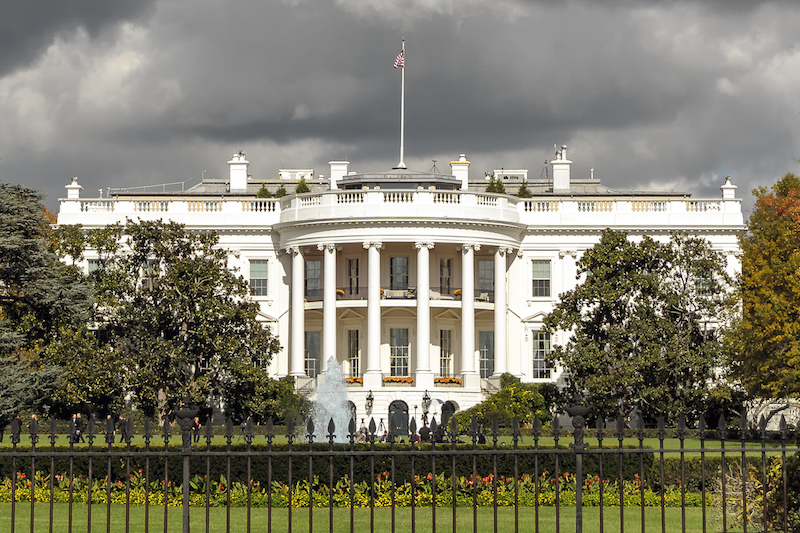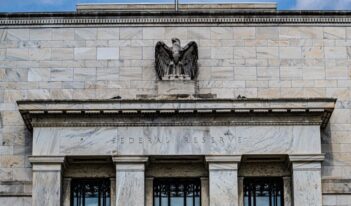
D.C. Circuit weighs constitutionality of the consumer financial watchdog’s organizational structure.
The U.S. Constitution places the “executive power” in the hands of the President and makes the President responsible for ensuring “that the laws be faithfully executed.” But can the President meaningfully supervise an agency whose head he cannot fire, except for specified reasons?
In a recent decision, the U.S. Court of Appeals for the District of Columbia Circuit considered that question as it relates to the Consumer Financial Protection Bureau (CFPB), an agency created by Congress in the wake of the 2008 financial crisis to “promote stability and confidence in the country’s financial system.” Specifically, the court considered the constitutionality of Congress’s decision—in the 2010 Dodd-Frank Wall Street Reform and Consumer Protection Act (Dodd-Frank Act), which created the CFPB—to insulate the CFPB director from presidential influence by allowing removal only in cases of “inefficiency, neglect of duty, or malfeasance in office.”
Weighing prior decisions by the U.S. Supreme Court, the history of independent agencies, and the concerns that motivated Congress to establish the CFPB, the D.C. Circuit held that “for-cause” removal protection for the CFPB director comports with the Constitution.
The court’s decision in the case of PHH Corporation v. Consumer Financial Protection Bureau arose from charges of wrongdoing the CFPB brought against mortgage lender PHH Corporation. The CFPB alleged PHH Corporation was involved in “a captive reinsurance arrangement” in which a “mortgage lender refers borrowers to a mortgage insurer” in exchange for a “kickback.”
After the CFPB director ordered repayment by PHH Corporation and its co-defendant companies of “more than $109 million,” a panel of three judges on the D.C. Circuit reviewed and overturned the director’s decision.
Afterwards, the D.C. Circuit as a whole took the unusual step of deciding to reconsider the three-judge panel’s decision en banc, meaning that all judges on the D.C. Circuit would decide the case anew.
Judge Cornelia T.L. Pillard, who authored the majority’s opinion for the en banc court, first acknowledged that Congress established the CFPB in response to the economic devastation caused by the financial crisis. To provide for stability and independence, Congress gave the CFPB director a fixed term of office and for-cause protection from removal.
Considering the director’s insulation from removal by the President, Judge Pillard looked to Humphrey’s Executor v. United States, a New Deal-era decision in which the Supreme Court upheld the constitutionality of the Federal Trade Commission (FTC), an independent “consumer-protection financial regulator” whose authorities Judge Pillard characterized as “analogous to those of the CFPB.” In Humphrey’s Executor, the Supreme Court approved of Congress’s protection of “agency leadership from at-will removal by the President.” Moreover, the for-cause removal provision that Congress included in the Dodd-Frank Act, Judge Pillard observed, employed “the very same language the Supreme Court approved” of in Humphrey’s Executor.
Having determined that the CFPB’s mission and purpose justified a measure of independence from presidential oversight, Judge Pillard next argued that “the nature of the function that Congress” assigned to the CFPB justified the “means of independence” it used—that is, for-cause removal protection for the director. Because the CFPB regulates financial products “primarily for personal, family, or household purposes,” Judge Pillard reasoned, the CFPB’s “independence shields the nation’s economy” and fosters “longer-term economic stability.”
PHH Corporation argued that Humphrey’s Executor should represent only a “narrow exception to a general prohibition on any removal restriction,” but Judge Pillard rejected that argument. She reasoned that it would call into question “the established validity of other independent agencies” and could “broadly transform modern government.”
Judge Robert L. Wilkins concurred with Judge Pillard but emphasized in his separate opinion that the CFPB’s authority is primarily for “adjudication”—that is, resolving individual disputes involving the companies and persons before it, as opposed to traditionally “executive” functions like formulating policy and conducting law enforcement activities. The agency’s focus on adjudicatory activities means that for-cause removal protection poses only a minimal risk to presidential authority, he argued.
Judge Thomas B. Griffith likewise did not find the Dodd-Frank Act’s for-cause removal provisions concerning. He observed in another separate opinion that because the Act authorized removal by the President for “inefficiency, neglect of duty, or malfeasance in office,” the President maintained ample room to supervise the CFPB director—even, for example, to remove a director for making “ineffective policy choices.”
In a pair of dissenting opinions, Judges Karen L. Henderson and Brett M. Kavanaugh disagreed with the majority and would have held that shielding the CFPB director from at-will removal violated Article II of the Constitution.
Judge Henderson observed that Congress delegated “immense power” to the CFPB director, including “to define elastic concepts of unfairness, deception and abuse in an array of consumer contexts” and to “enforce his rules in administrative proceedings.” Judge Henderson argued that Humphrey’s Executor “remains the exception, not the rule,” and that courts should view restraints on presidential removal with great skepticism. Moreover, she contended that the CFPB differs significantly from the FTC. For example, in her view, the CFPB cannot be considered “a nonpartisan body of experts” like the FTC, nor is the CFPB led by a “bipartisan multimember body” like the FTC.
Judge Henderson also rejected the majority’s reliance on the Supreme Court’s decision in Morrison v. Olson. Judge Pillard argued that in Morrison the Supreme Court validated the “for-cause removal protection for an individual agency head who exercised substantial executive authority,” but Judge Henderson countered that Morrison—a case that approved of an “independent counsel” to investigate certain executive branch officials during the Reagan Administration—had little in common with the CFPB because the counsel at issue in Morrison had only “limited jurisdiction and tenure” and did not have “policymaking or significant administrative authority.”
In his separate dissent, Judge Kavanaugh agreed that for-cause removal protection violated Article II and explained that to constrain the “enormous power” independent agencies have, they “historically have been headed by multiple commissioners or board members.” Because the CFPB director is the sole head of his agency, Judge Kavanaugh reasoned, the director may enjoy “more unilateral authority” than any other U.S. government official.
The D.C. Circuit issued its decision on January 31, 2018.



